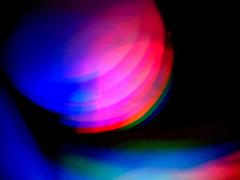 We can say that the led is implementing the most direct way convert electrical energy into light: the electrical energy is spent on it to bring together electrons and holes, and as soon as they are next to each other, they give up their energy as light. In led (Ideally) each "down to the ground floor" of the electron gives the excess energy by emitting light particles – photons. All the produced photons carry almost the same portion of energy, which depend from the "height", which "Jumps" of the electron (in a scientific way: from the band gap semiconductor). And the color of radiation, in turn, depends on the photon energy: increasing energy, we move from red to purple. Of all these lengthy arguments can be extracted such "dry sediment. Firstly, the led – a small piece of semiconductor crystal (a built-in transparent casing, which serves the same time and a lens for light gathering), it does not hot, gaseous and aggressive components. Secondly, in theory, nothing prevents a light-emitting diode efficiency arbitrarily close to 100%. Third, the led emits almost pure spectral color. and Fourth, the color can be selected by choosing as the basis of semiconductor material with the desired bandgap. It is not surprising that the invasion of semiconductors in the light began just where needed colored light. This first traffic lights. There are obvious advantages of LEDs: they shine just the color that is needed, but in ordinary traffic lights should be placed on top of the lamp color filter, which absorbs the lion's share of the light flux.
We can say that the led is implementing the most direct way convert electrical energy into light: the electrical energy is spent on it to bring together electrons and holes, and as soon as they are next to each other, they give up their energy as light. In led (Ideally) each "down to the ground floor" of the electron gives the excess energy by emitting light particles – photons. All the produced photons carry almost the same portion of energy, which depend from the "height", which "Jumps" of the electron (in a scientific way: from the band gap semiconductor). And the color of radiation, in turn, depends on the photon energy: increasing energy, we move from red to purple. Of all these lengthy arguments can be extracted such "dry sediment. Firstly, the led – a small piece of semiconductor crystal (a built-in transparent casing, which serves the same time and a lens for light gathering), it does not hot, gaseous and aggressive components. Secondly, in theory, nothing prevents a light-emitting diode efficiency arbitrarily close to 100%. Third, the led emits almost pure spectral color. and Fourth, the color can be selected by choosing as the basis of semiconductor material with the desired bandgap. It is not surprising that the invasion of semiconductors in the light began just where needed colored light. This first traffic lights. There are obvious advantages of LEDs: they shine just the color that is needed, but in ordinary traffic lights should be placed on top of the lamp color filter, which absorbs the lion's share of the light flux.
Archive for March, 2011
Basis Light
Mar 24